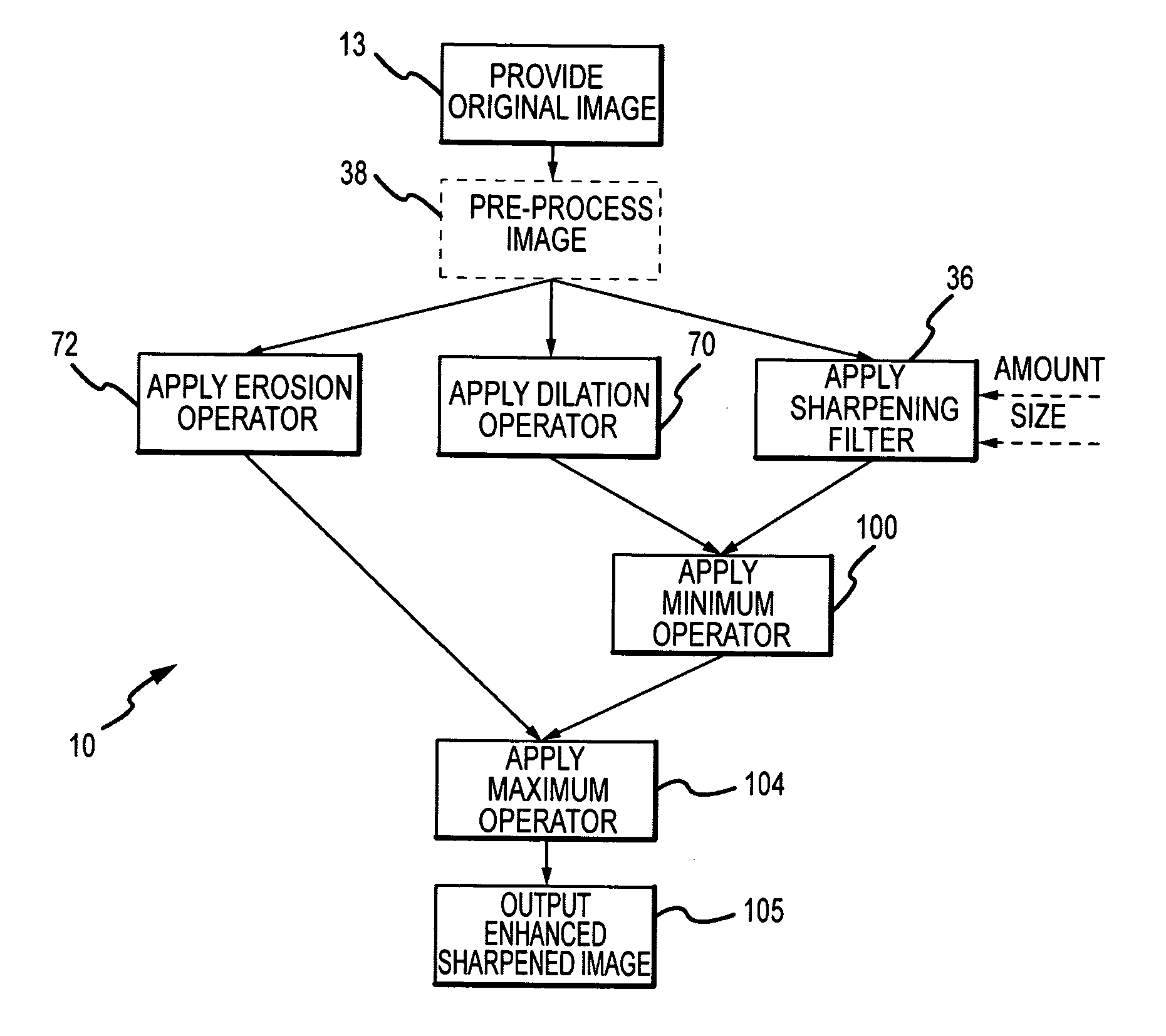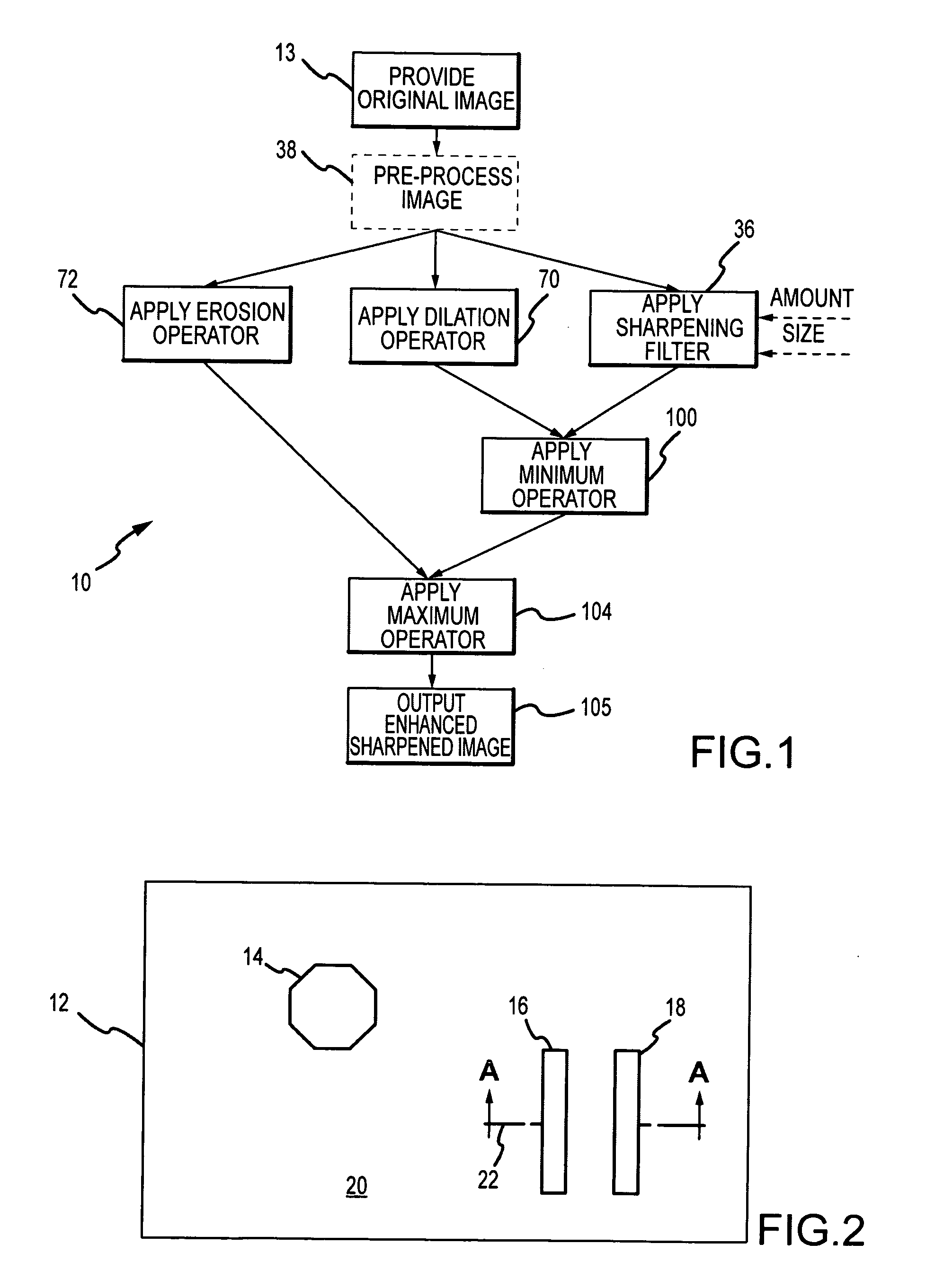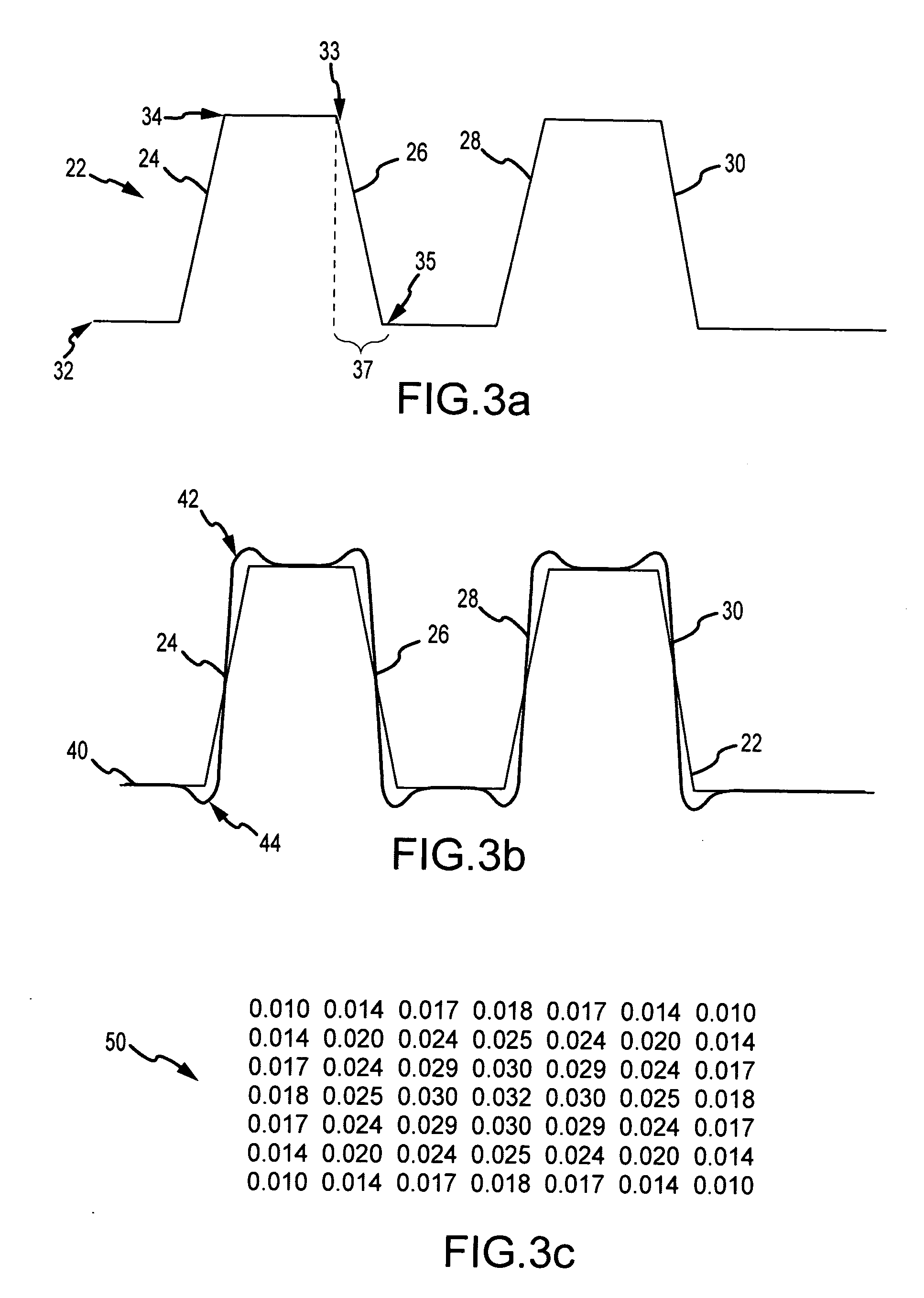System and method for sharpening of digital images
a digital image and system technology, applied in image enhancement, image analysis, instruments, etc., can solve the problems of easy creation of unwanted and conspicuous edge effects, and achieve the effect of strong edge sharpening
- Summary
- Abstract
- Description
- Claims
- Application Information
AI Technical Summary
Benefits of technology
Problems solved by technology
Method used
Image
Examples
Embodiment Construction
[0022]The present invention describes a system and method for sharpening of the spatial transitions of edges in digital images that provides for more aggressive sharpening of the spatial transitions while suppressing the local contrast enhancement (under / overshoot) at edge borders and ringing outside the edge borders normally associated with such aggressive sharpening. Furthermore, the effects of sharpening on features such as single-pixel lines, noise or glint that cannot be spatially sharpened are reversed so that those features are effectively left alone by the sharpening method.
[0023]For purposes of explanation, the sharpening method will now be described in conjunction with a simplified digital image having idealized edges some number of pixels in width. In natural gray-scale images the edges within a single image will vary in width and contrast, will rarely be perfectly clean and will have some amount of noise. However, the method as described was developed for and effective i...
PUM
 Login to View More
Login to View More Abstract
Description
Claims
Application Information
 Login to View More
Login to View More - R&D
- Intellectual Property
- Life Sciences
- Materials
- Tech Scout
- Unparalleled Data Quality
- Higher Quality Content
- 60% Fewer Hallucinations
Browse by: Latest US Patents, China's latest patents, Technical Efficacy Thesaurus, Application Domain, Technology Topic, Popular Technical Reports.
© 2025 PatSnap. All rights reserved.Legal|Privacy policy|Modern Slavery Act Transparency Statement|Sitemap|About US| Contact US: help@patsnap.com



